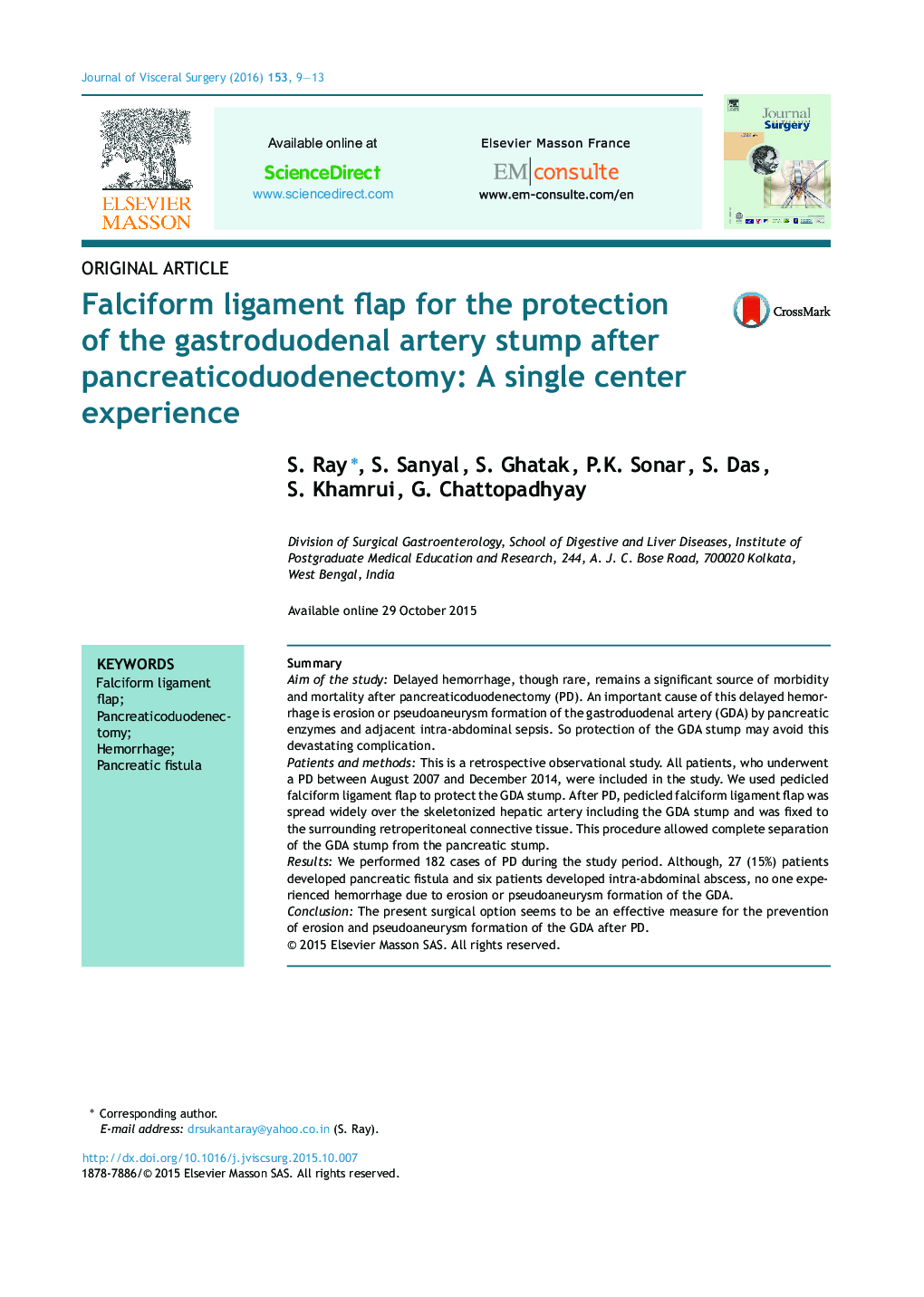| Article ID | Journal | Published Year | Pages | File Type |
|---|---|---|---|---|
| 3315727 | Journal of Visceral Surgery | 2016 | 5 Pages |
SummaryAim of the studyDelayed hemorrhage, though rare, remains a significant source of morbidity and mortality after pancreaticoduodenectomy (PD). An important cause of this delayed hemorrhage is erosion or pseudoaneurysm formation of the gastroduodenal artery (GDA) by pancreatic enzymes and adjacent intra-abdominal sepsis. So protection of the GDA stump may avoid this devastating complication.Patients and methodsThis is a retrospective observational study. All patients, who underwent a PD between August 2007 and December 2014, were included in the study. We used pedicled falciform ligament flap to protect the GDA stump. After PD, pedicled falciform ligament flap was spread widely over the skeletonized hepatic artery including the GDA stump and was fixed to the surrounding retroperitoneal connective tissue. This procedure allowed complete separation of the GDA stump from the pancreatic stump.ResultsWe performed 182 cases of PD during the study period. Although, 27 (15%) patients developed pancreatic fistula and six patients developed intra-abdominal abscess, no one experienced hemorrhage due to erosion or pseudoaneurysm formation of the GDA.ConclusionThe present surgical option seems to be an effective measure for the prevention of erosion and pseudoaneurysm formation of the GDA after PD.
